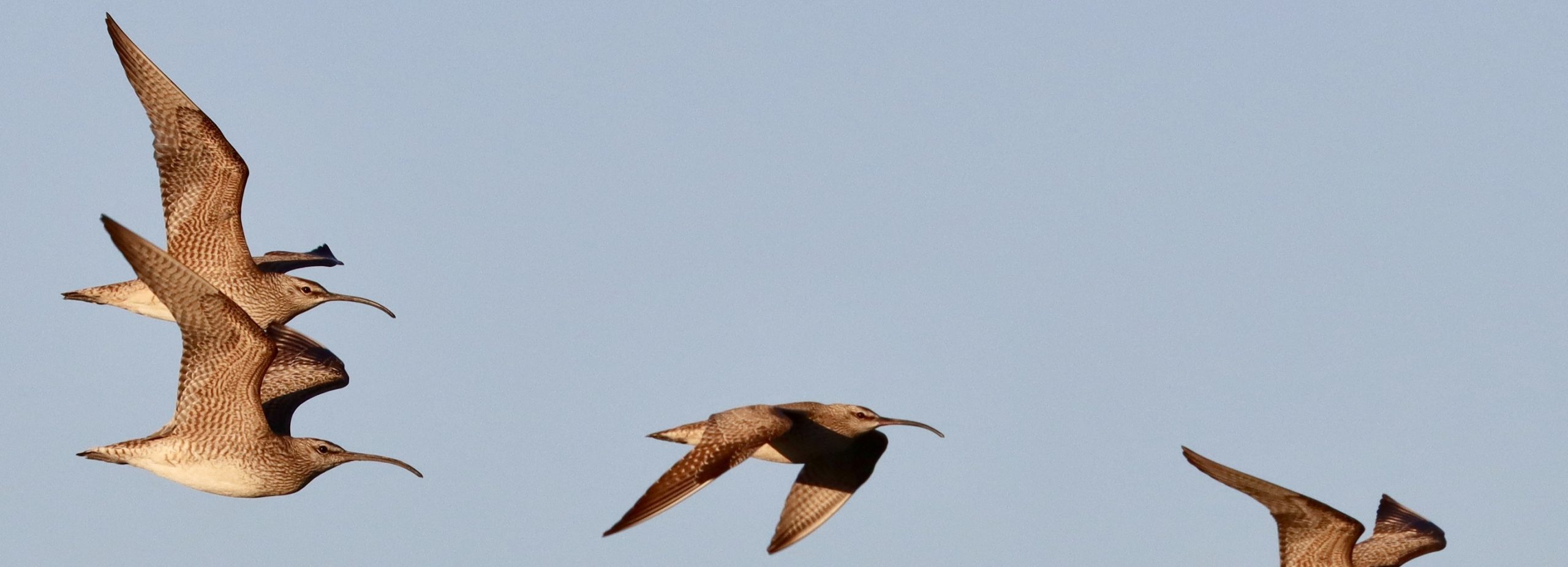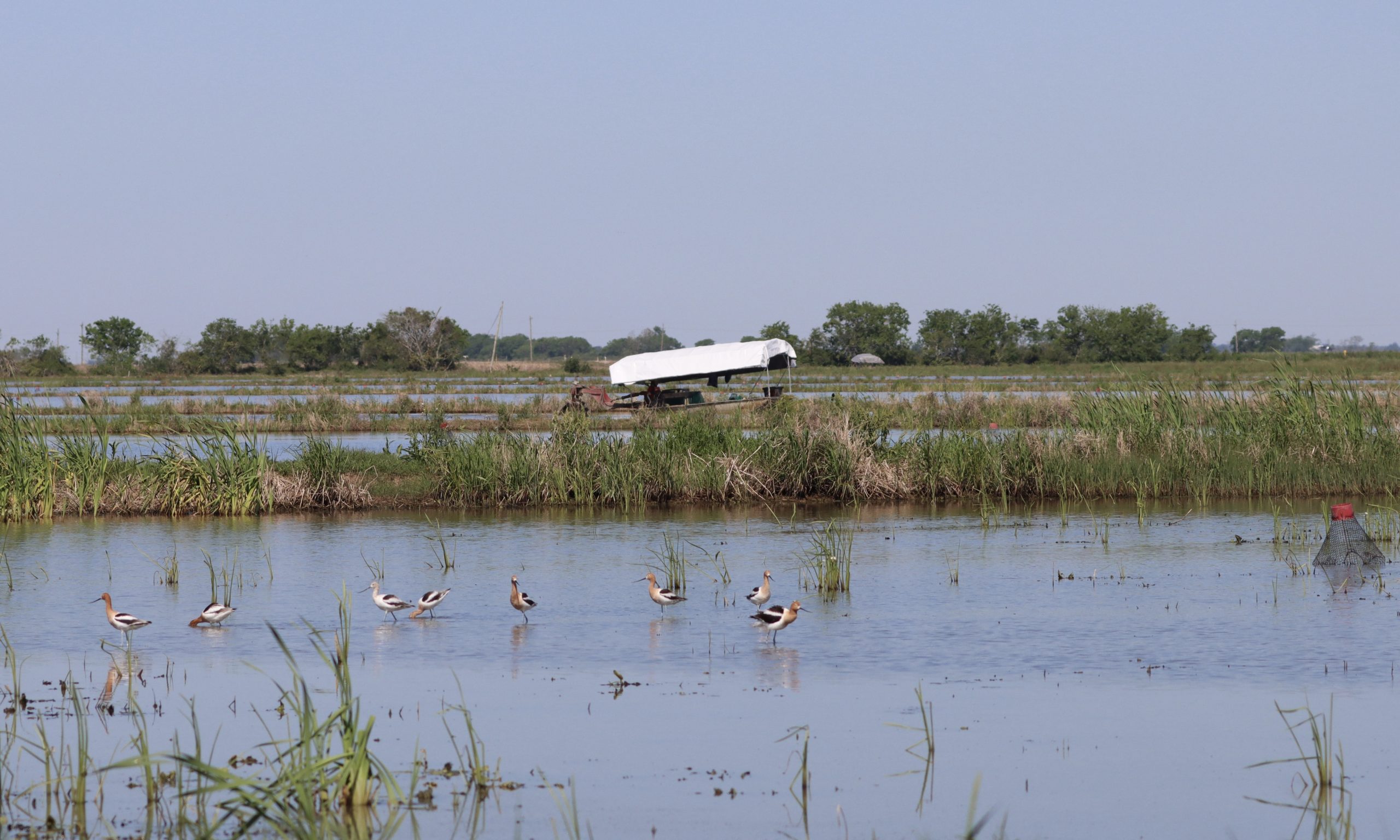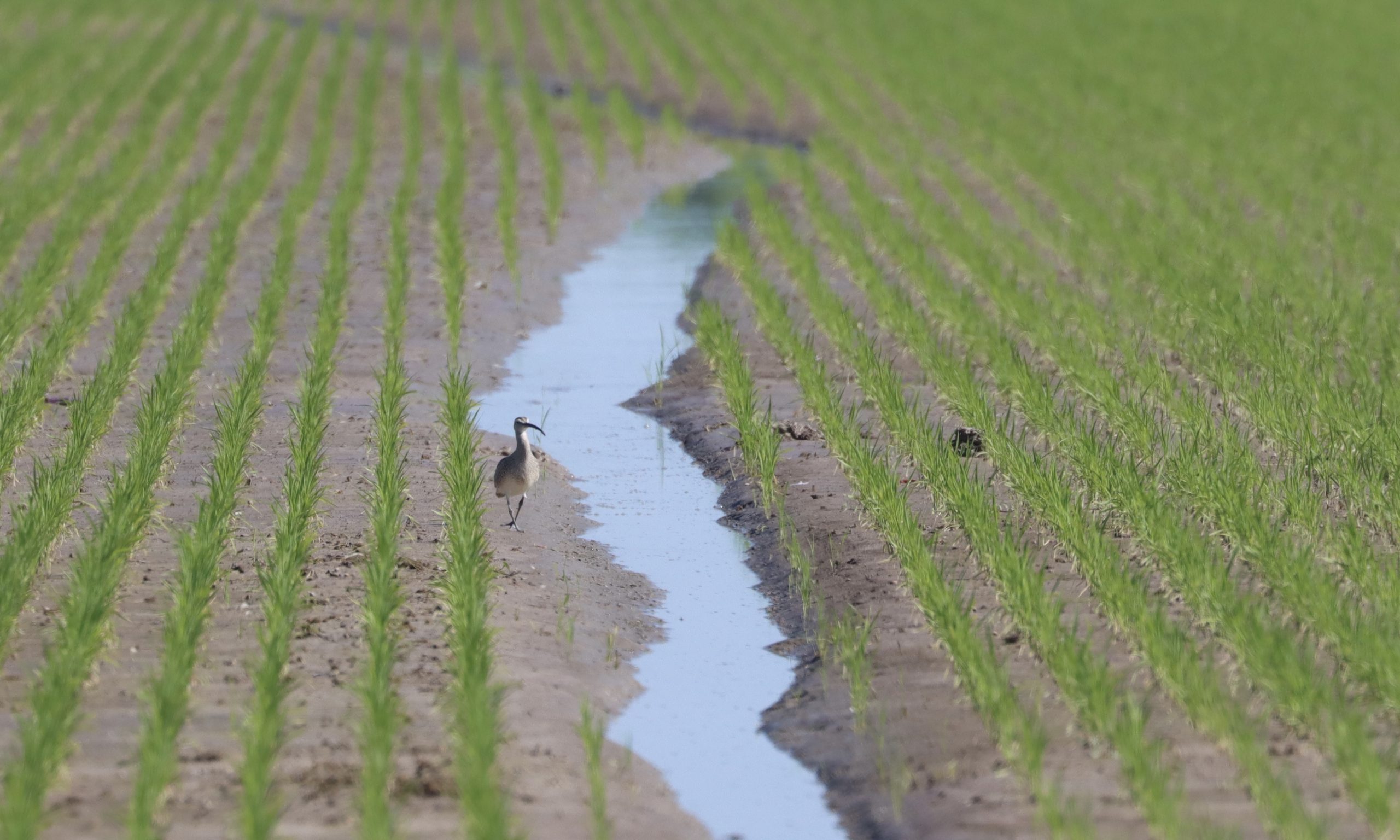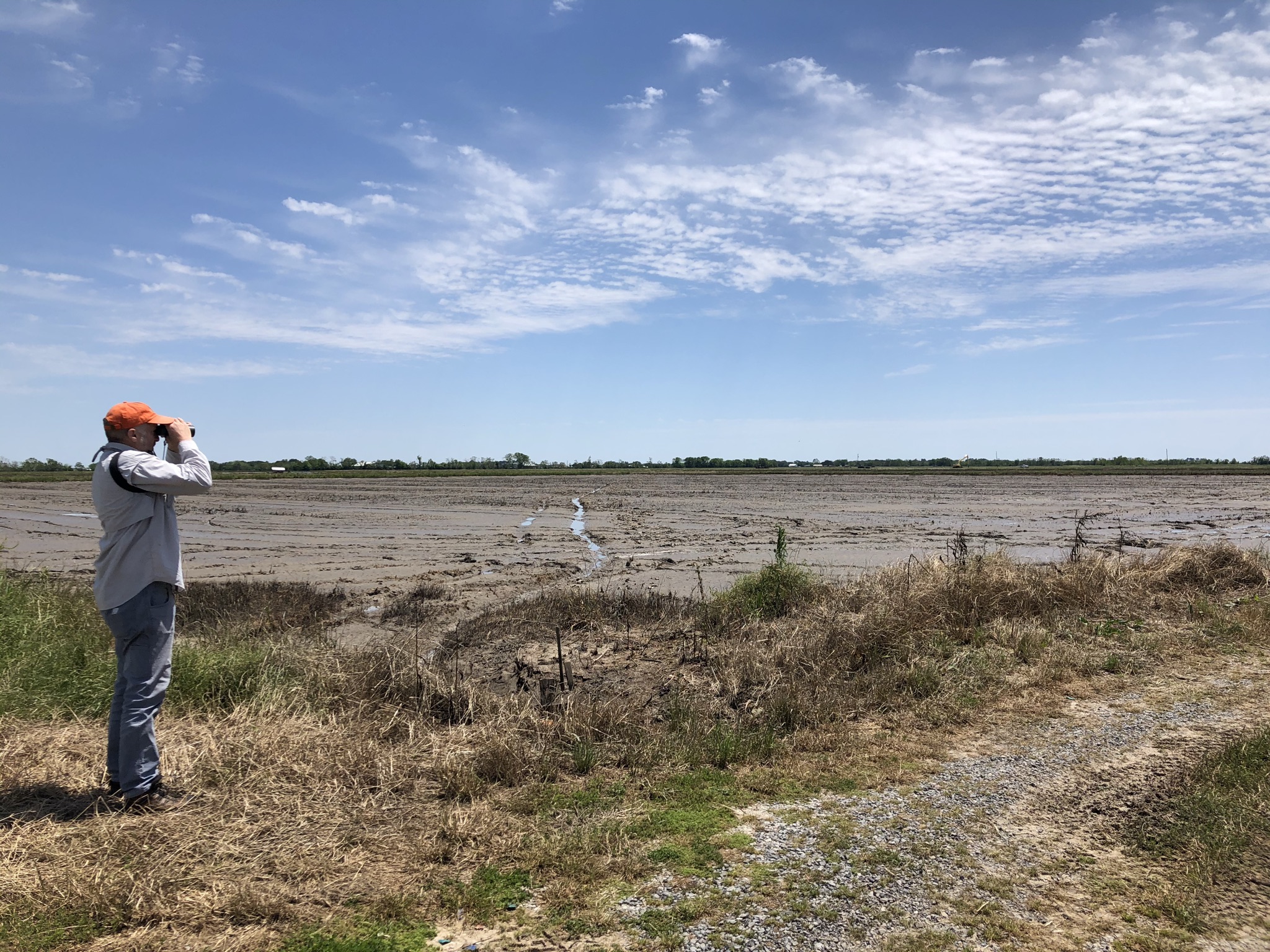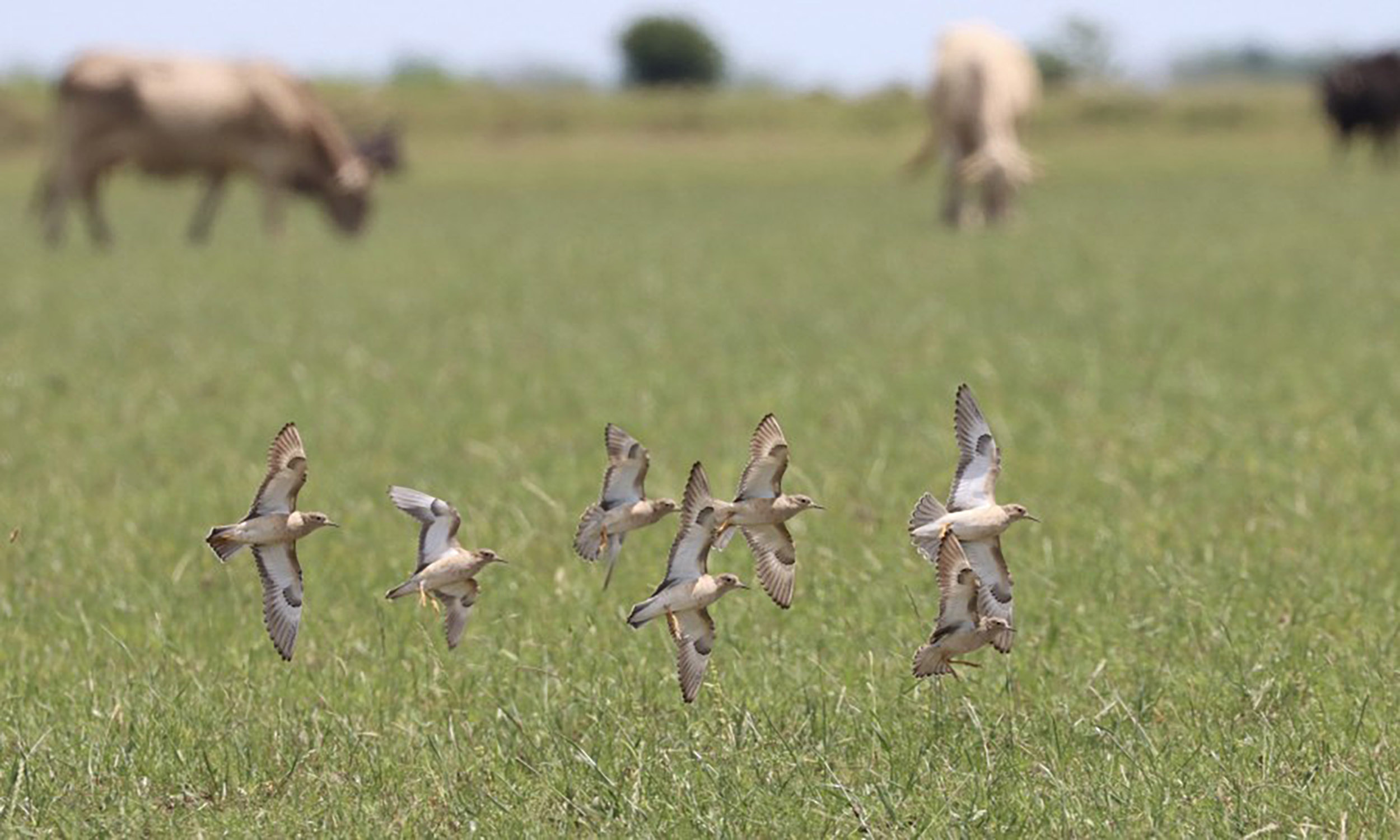Whimbrel (Numenius phaeopus) have been identified as a conservation priority in the Atlantic Flyway, with a population that has declined by 50% between the early 1990s and the mid-2000s at key Atlantic staging areas. Manomet, along with the Center for Conservation Biology at William & Mary and many other partners are working together to gather all the information we need to apply conservation action to Whimbrel populations. In April 2021, Manomet’s Brad Winn and I headed to the Gulf coast to expand our recent work in the Atlantic flyway into the Midcontinent Flyway. Our goal for this trip? To delineate key staging areas for Whimbrel in Louisiana and Texas and build relationships with the key conservation players.
Why are we so focused on the spring staging areas for Whimbrel? In the conservation field, monitoring population size and trend is essential to understanding the cause-effect links between management actions and population response. Therefore, one of the first questions we need to ask as we build a conservation strategy is: How many Whimbrel are there, and how do we count them? This, in itself, is quite the challenge. For ¾ of the year, Whimbrel are largely inaccessible. During the breeding season, they are thinly dispersed throughout the vast Arctic and sub-Arctic tundra. During fall migration, a large percentage fly straight out over the Atlantic Ocean, without ever passing through the lower 48 states. During the winter months, they are dispersed along the coasts of the Caribbean and northern South America, a coastline which is remote and difficult to survey. Therefore, the only time to do population-level headcounts of Whimbrel is at spring staging areas, and particularly at their nocturnal roost sites. There may just be a few of these roosts in a region, pooling birds from up to 50 miles away and numbering thousands of birds.
Manomet and our partners have been identifying these sites developing survey strategies in the Atlantic Flyway for the past several years, and we have built a monitoring network for roost sites along the Atlantic coast, including focal areas such as Virginia, South Carolina, and Georgia. Our goal in 2021 is to expand this monitoring network into the Gulf coast.
Where to survey
Over the last 10 years, Manomet and our team of partners have deployed over 40 transmitters on Whimbrel at various sites in North America. This mountain of data has vastly improved our understanding of Whimbrel migratory pathways, resource use, and survival. For our trip to the Gulf coast, the information relayed from these transmitters combined with publicly available ebird data helped us hone in on key sites to explore. For example, we analyzed the daily commutes of a satellite tagged bird in Louisiana, as it traveled from a coastal roost site inland to rice and crawfish fields to feed during the day. Those feeding areas happened to coincide with the largest concentrations of Whimbrel reported in ebird over the past decade, some of which numbered over 500 individuals. This allowed us to hypothesize that the coastal roost site identified by the satellite data could be functioning as a nocturnal roost for all those birds.
To test this hypothesis, we coordinated with refuge staff to do an evening survey in Rockefeller Wildlife Refuge, the location of the potential roost site. While we knew at least one bird (the satellite-tagged bird) was roosting there, we entered the night of 4/19 not knowing if any other birds would show up. We climbed onto an excavator to gain some elevation and started scanning the horizon for Whimbrels. What started out as a trickle soon turned into a flood, and by the end of the survey, we had tallied over 3,000 Whimbrels arriving onto the refuge. A great discovery! This count alone puts south-central Louisiana on the map as one of the top spring staging areas for Whimbrel on the Atlantic and Gulf Coasts. We did subsequent surveys the following two nights and were joined by State Ornithologist for LDWF, Robert Dobbs. We were thrilled to share our methods with Robert, and he and Louisiana Audubon have now joined forces to continue the surveys.





 Back to all
Back to all